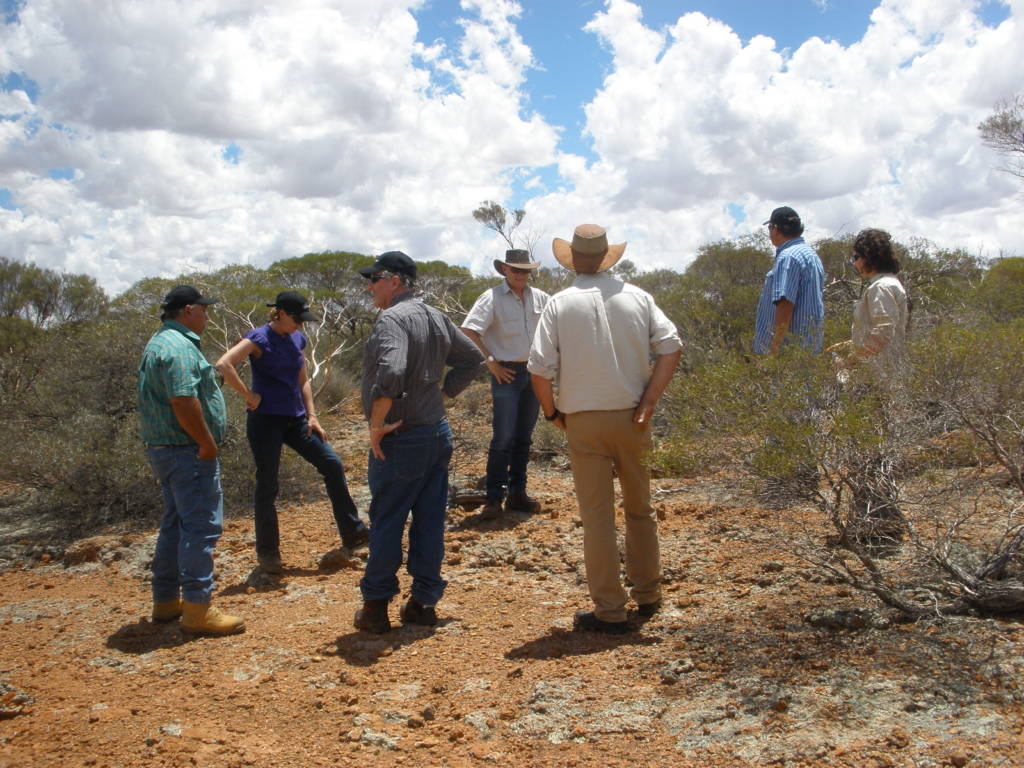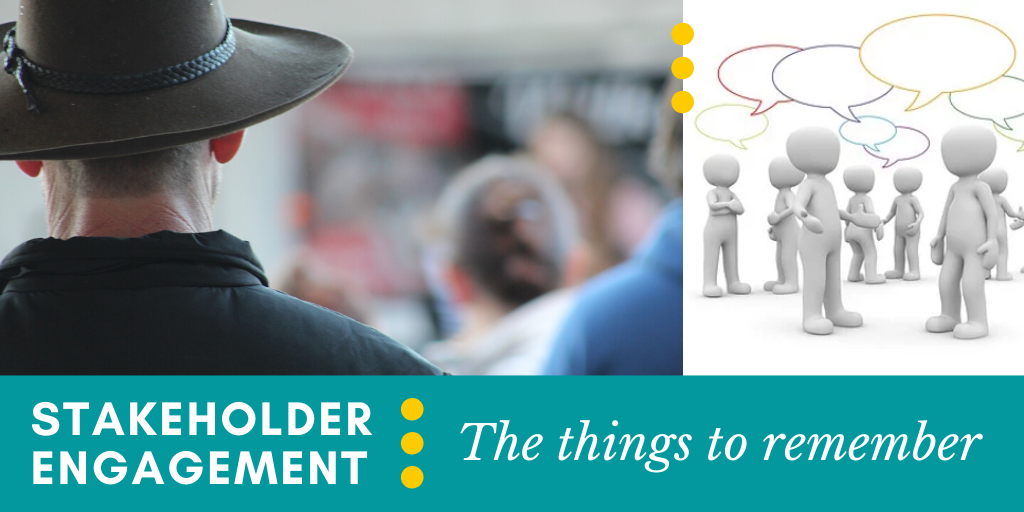Stakeholder engagement is an important component of social responsibility and provides an opportunity to promote robust relationships with interested parties who may be impacted or may influence and affect the decisions of an organisation. These individuals, groups or organisations can positively or negatively impact a project, providing beneficial or unfavourable outcomes.
Effective engagement involves developing a connection with stakeholders to establish involvement and input, to ensure that the issues, questions or feedback of interested parties are considered. Innovative outcomes may evolve from a stakeholder’s valuable insight into the boundaries, limitations and potential to achieve successful project outcomes.
In the Western Australian mining industry, a regulatory requirement exists to demonstrate stakeholder engagement at the development phase of a project, as well as during operation and throughout the completion of the closure phase, and forms part of an organisations social responsibility practices.
Identifying Stakeholders
Stakeholders identified for a mining operation may include:
- Government organisations
- Industry groups
- Native Title claimants
- Pastoral stations
- Community groups
- Employees & contractors
- Consultants, suppliers & service providers

It is important to identify relevant stakeholders, as well as understanding their level of interest and influence on a project. Getting the balance of communication and consultation right is as important as identifying stakeholders. Stakeholders may have different requirements and expectations. It should be determined at what stage of a project is relevant to a particular stakeholder, as well as the volume of information shared and frequency of consultation, to avoid over or under engaging with interested parties.
Some key stakeholders require communication and consultation across a number of stages throughout a project; while others require a specific or less detailed approach. It is important to target communication with stakeholders and interested parties to ensure the effective exchange of information.
Communication and consultation with interested parties should be inclusive, relevant and responsive; aligning with following principles (DMIRS 2020) :
- acknowledging stakeholders’ views and consider issues from their perspective.
- risk-based and adaptive, adjusting focus in response to changing circumstances
- provide transparent, timely, consistent information and feedback
- engage in a manner that encourages mutual trust and respect.

Purpose of Stakeholder Engagement
Understanding the information requirements, apprehensions and ambitions of interested parties impacted by mining developments is an important component of stakeholder engagement. (Rod McCrea 2018).
The purpose of stakeholder engagement is to consult and inform the project design where appropriate, and to develop stakeholder awareness of a project. Consultation with stakeholders may be used to inform the risk identification process and may influence an organisation’s decisions. (DMIRS 2014).
Providing stakeholders with information regarding social, economic, environmental and regulatory processes can positively affect an organisation’s social licence to operate and is linked to more positive attitudes toward a proposed project. (Rod McCrea 2018).

Effective Engagement
Providing stakeholders with an opportunity to comment and provide feedback on a project is important throughout the life of the operation. It is also pertinent that any issues, comments or suggestions received are adequately responded to.
The following principles may be adopted to effectively manage stakeholder engagement (DMIRS 2020):
- Identification of stakeholders and interested parties.
- Inclusive processes which encompass all interested parties throughout the life of a project.
- A targeted communication strategy reflecting the needs of interested parties.
- Allocation of adequate resources to ensure the effectiveness of the engagement process.
- Work with communities to manage potential impacts.
Methods of Engagement
Communications with stakeholders should be targeted to the needs of the interested parties, modes of engagement may include one or many of the following:
- Notifications
- Formal documents & reports
- Meetings & presentations
- Information sessions
- Site visits
- Ongoing dialogue and correspondence
Conclusion
Stakeholder engagement is linked to more positive attitudes toward mining projects. Therefore, remember to: identify stakeholders, balance the volume and frequency of information and provide stakeholders with opportunities to provide feedback.

Bibliography
ANZMEC/MEC. 2000. Strategic Framework for Mine Closure. Australian and New Zealand Minerals and Energy Council and the Minerals Council of Australia.
DMIRS. 2014. Environmental Regulatory Strategy. Department of Mines, Industry Regulation & Safety.
—. 2020. Stakeholder Engagement Principles. www.dmirs.wa.gov.au.
Rod McCrea, Andrea Walton, Tom Measham. 2018. “Stakeholder engagement processes for mining projects.” CSIRO.

